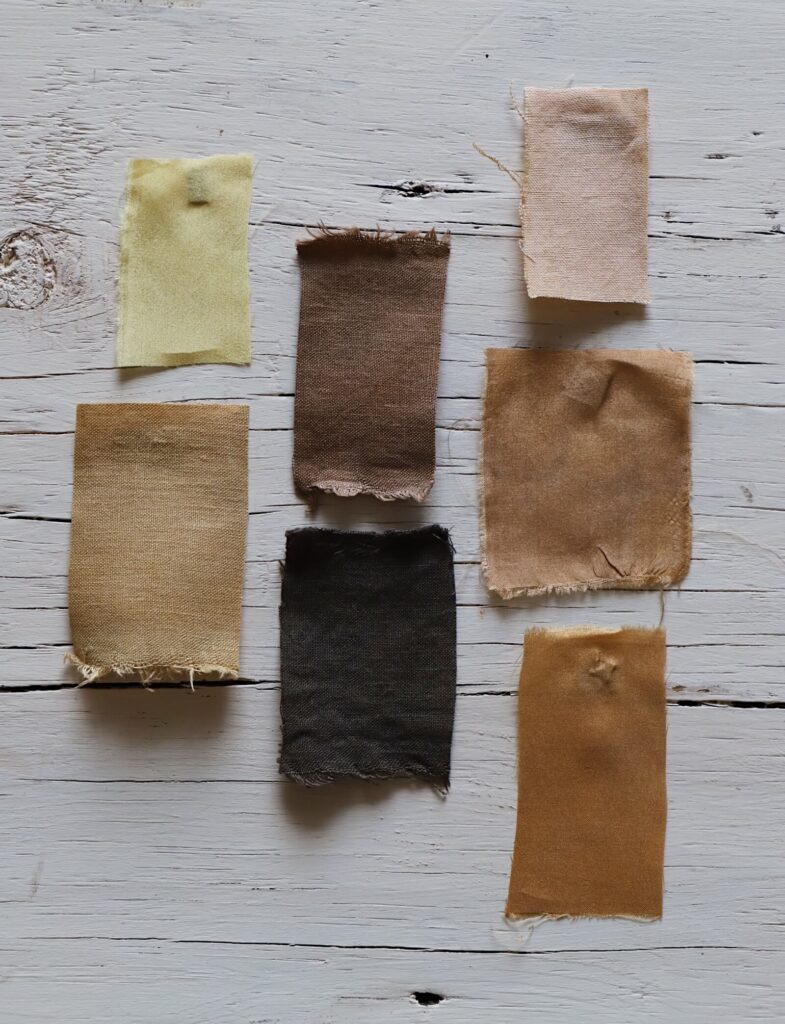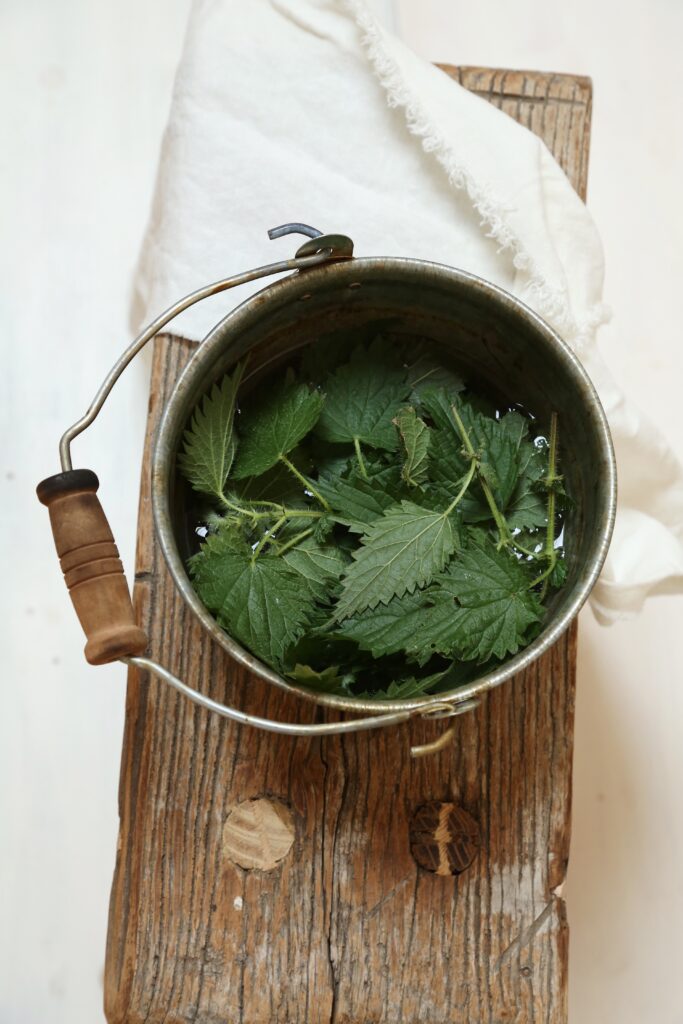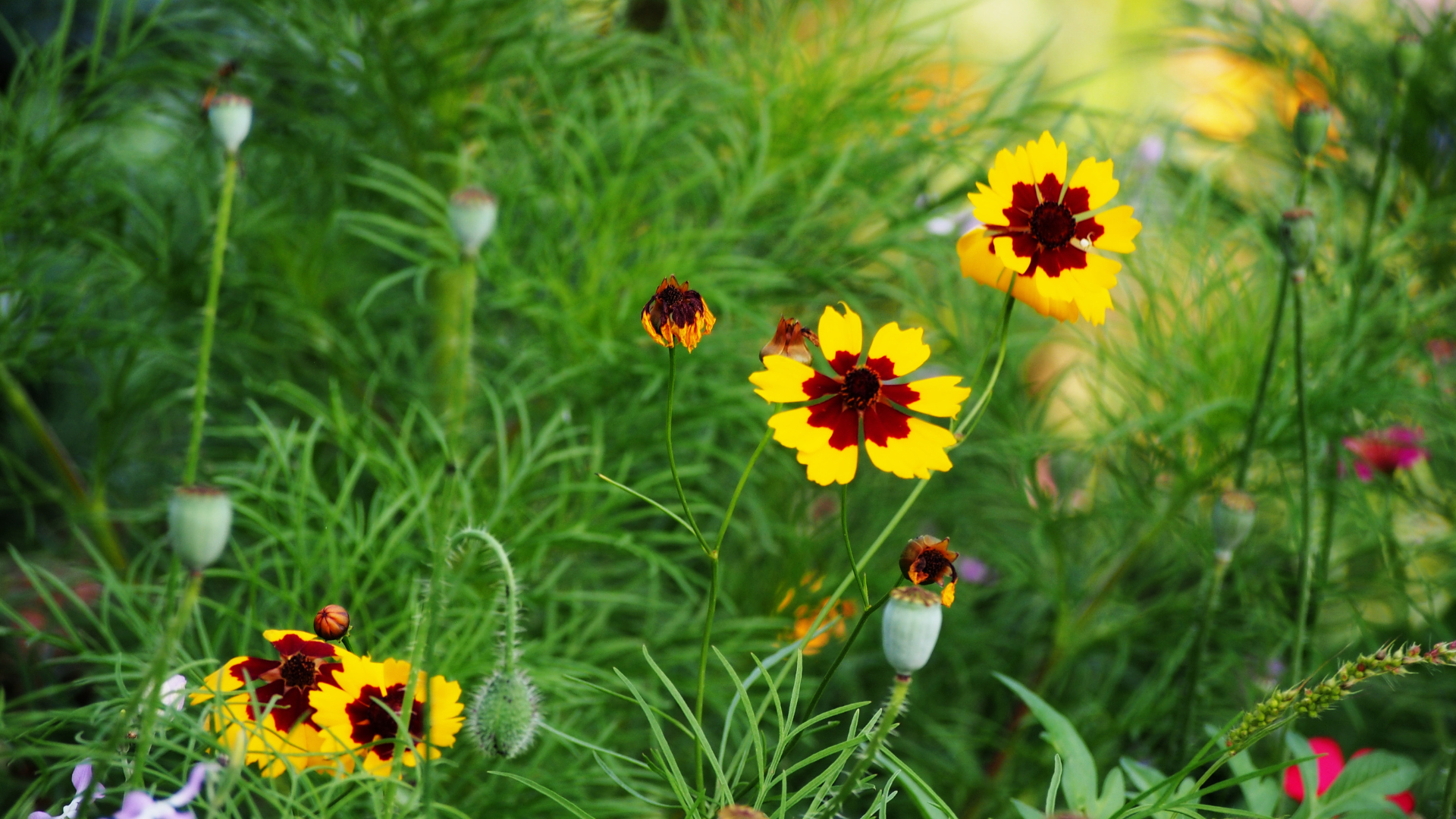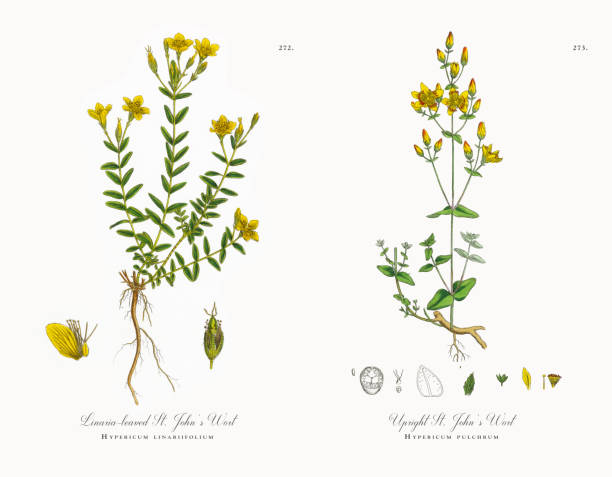As spring slowly awakens here in Ireland and the leaves are still unfurling, the landscape is changing. There is a throng of dye sources raising their heads after a spring that was slow to start. While there is always natural dye colour to be sourced during the colder months of winter, the natural dyer becomes spoilt for choice in spring. Some of my favourite natural dye plants are out in full force at the moment, it is a fruitful time to go foraging. Spring holds a rich palette of earthy natural tones which complement each other in that effortless way that only nature can achieve. Let’s take a look at 6 Spring dye plants to explore this season.
1. Willow: A Surprising Natural Dye Plant


A Medicinal Dye Plant: Shades of Pink, Peach, Terracotta & Brown
One of my favourite sources of natural colour is the unassuming weeping willow, Salix Babylonica. This incredible tree has provided one of the most significant contributions to medicine through its bark & yields beautiful shades of terracotta from the dye pot. In the late 19th century, aspirin was created after being derived from the salicylic acid of the willow bark. This was synthetically manufactured to become one of the most utilised medicines in our modern world. The colours from willow are saturated and range from soft pink to deep terracotta.
2. Gorse: A Prickly Dye Source



A reliable source of yellow dye: Shades of Yellows, Greens & Browns
If you take a walk in the hills & wild areas of Ireland at the moment, you will notice the landscape dotted with bursts of yellow clusters from Gorse. Gorse, Ulex, is a thorny evergreen shrub native to this little Island. The edible flowers fill the air with the heady scent of sweet coconut & remind me of suntan lotion and long summer days. Gorse is a vibrant source of yellow dye, with deep shades of green when you modify it with iron.
3. Heather: A Robust Natural Dye Plant


A Fantastic Spring Dye Plant: Shades of Yellows, Greens, Greys & Browns
If you take a look at my last post, I extracted colour from Heather, Calluna vulgaris commonly known as Ling. Heather is another robust source of yellow dye & you can get some interesting tones when you modify this with alkaline or acidic ingredients like baking powder or vinegar. If you have access to Heather, I would strongly recommend you experiment with this age-old dye source.
4. Eucalyptus: A Prolific Source of Natural Dye


An All Round Dye Plant: Shades of Beige, Brown, Grey, Rust, Olive, Yellow & Orange
This time last year, I did some extensive testing with the leaves of two different types of Eucalyptus, the cinerea, commonly known as the silver dollar & the gunnii. Eucalyptus is a reliable and consistent source of natural dye & never fails to disappoint, no matter the season. The range of shades possible from these two varieties was extensive and bursting with possibilities.
Lately, I have been drawn to dye plants that provide robust & colourfast natural dye. The ones I have mentioned above all fit these criteria & I would add oak & alder to this list.
Amongst the roadside, fields & wild open spaces you will find a range of dye plants that are considered weeds by many. The ones that come to mind are nettle, yarrow, buddleia & dandelion.


Top 6 Spring Dye Plants
- Heather, flowers or stems
- Gorse flowers
- Willow leaves or stems
- Oak leaves
- Alder cones twigs or leaves
- Eucalyptus leaves or bark

Foraging For Spring Dye Plants, Colours & Dyes
When you first start natural dyeing & foraging for colour, it can be quite overwhelming with such an abundance of plants. Sometimes knowing where to start can be the most challenging aspect. I always recommend keeping it as simple as possible. You can approach your foraging with reckless abandon, although I don’t encourage that! Consider the colours that draw you & what plants grow in your area? I would recommend getting a plant identifier app to help you slowly build your knowledge & with it your confidence.
You can pick one of the Spring dye plants from the list above & start there, or learn what grows most abundantly in your area. What weeds grow along the wayside & in hedgerows? What trees populate your town? It goes without saying, but always be careful when gathering plants, as some may be poisonous or toxic. Wherever you are on your natural dye journey, I hope these dye plants provide some inspiration for your next dye bath.
EXPAND YOUR NATURAL DYE SKILLS & DEEPEN YOUR PRACTICE
Whether experimenting with these plants or curious about other natural dyes, there’s so much more to discover. In the next few weeks, I’ll be re-opening enrolment for my Foundational Natural Dye Course & Coaching, where we’ll dive deep into the art and science of creating beautiful, sustainable colours from nature.
If you want to deepen your practice, this course will take you through foundational techniques of natural dyeing. Expand your craft & elevate your learning with live classes, a full natural dye curriculum & expert guidance to help you along the way. Keep an eye out for more details.
Until then, happy colour adventures!






+ show Comments
- Hide Comments
add a comment